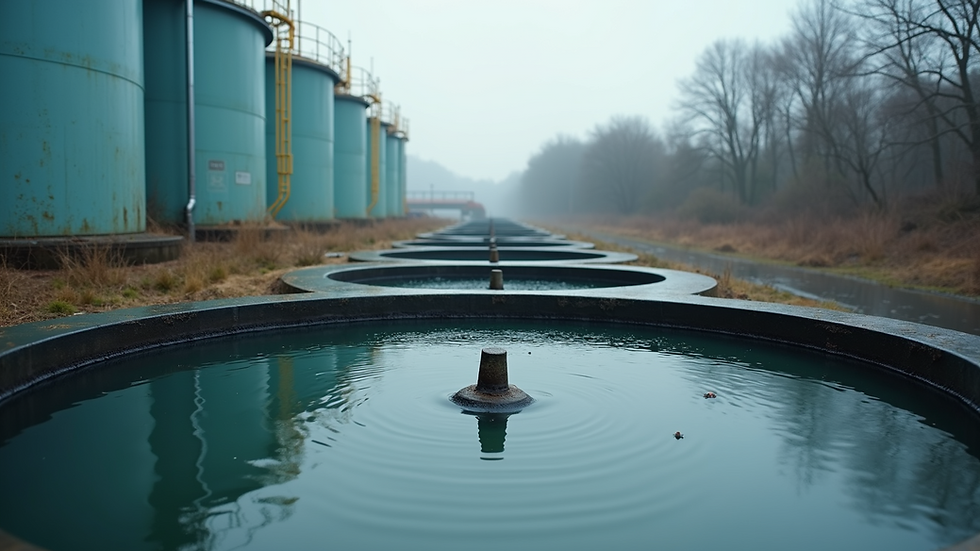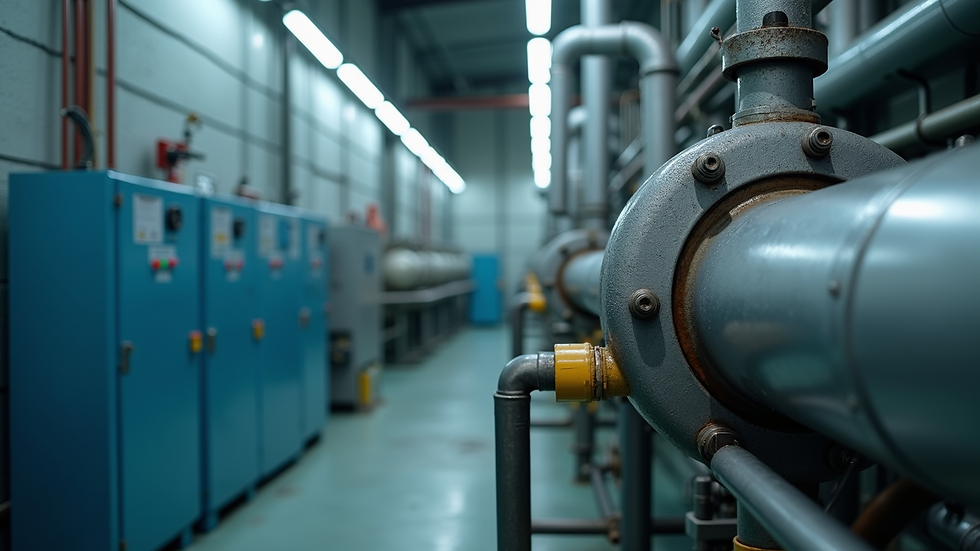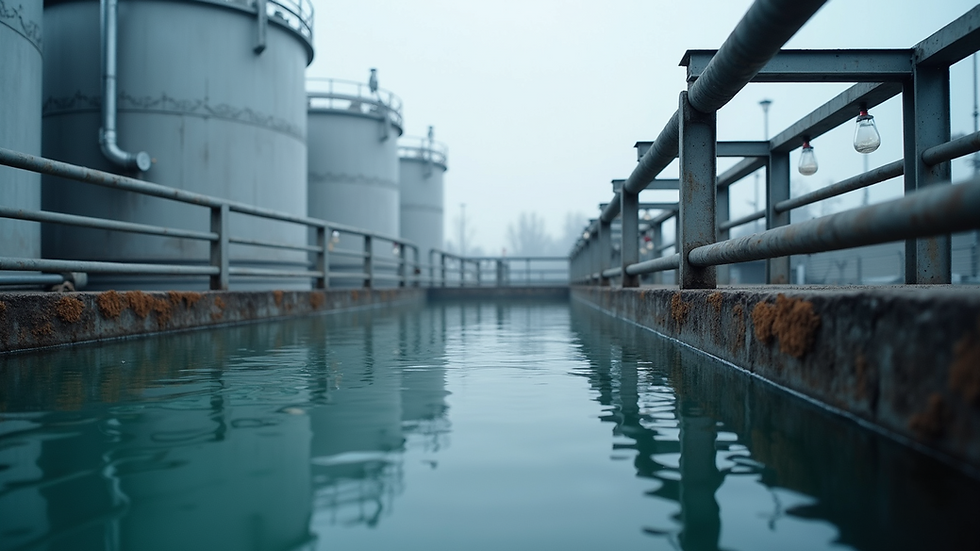Effective Solutions for Industrial Wastewater
- palwinder kaur
- Sep 16
- 3 min read
Industrial processes generate large volumes of wastewater that contain various pollutants. Managing this wastewater effectively is crucial to protect the environment, comply with regulations, and promote sustainable industrial growth. This article explores practical and innovative solutions for treating and managing industrial wastewater, helping industries reduce their environmental footprint while optimizing resource use.
Understanding Industrial Wastewater Solutions
Industrial wastewater solutions involve a range of treatment methods designed to remove contaminants from water discharged by factories and manufacturing plants. These solutions vary depending on the type of industry, the nature of pollutants, and local environmental standards. Common goals include reducing chemical oxygen demand (COD), removing heavy metals, and eliminating suspended solids.
Some widely used treatment techniques include:
Physical treatment: Sedimentation, filtration, and flotation to remove solids.
Chemical treatment: Coagulation, flocculation, and neutralization to precipitate contaminants.
Biological treatment: Using microorganisms to degrade organic pollutants.
Advanced treatment: Membrane filtration, adsorption, and advanced oxidation processes.
Each method can be combined in a treatment train to achieve the desired water quality. For example, a textile factory might use sedimentation tanks followed by biological treatment and then membrane filtration to ensure the water is safe for discharge or reuse.

Industrial wastewater treatment tanks at a factory
Key Technologies in Industrial Wastewater Treatment
Several technologies have proven effective in treating industrial wastewater. Selecting the right technology depends on the wastewater composition and treatment goals.
Membrane Filtration
Membrane filtration, including microfiltration, ultrafiltration, nanofiltration, and reverse osmosis, is highly effective in removing suspended solids, bacteria, and dissolved contaminants. Reverse osmosis, in particular, can remove salts and heavy metals, making it suitable for industries like pharmaceuticals and electronics.
Biological Treatment
Biological treatment uses bacteria and other microorganisms to break down organic pollutants. Activated sludge systems and biofilm reactors are common biological methods. These are cost-effective and environmentally friendly, especially for wastewater with high organic content, such as food processing effluents.
Chemical Precipitation
Chemical precipitation involves adding chemicals to wastewater to convert dissolved metals and phosphates into solid particles that can be removed by sedimentation. This method is widely used in metal plating and mining industries.
Advanced Oxidation Processes (AOPs)
AOPs use powerful oxidants like ozone, hydrogen peroxide, or UV light to degrade complex organic molecules that are difficult to treat biologically. These processes are effective for removing toxic and non-biodegradable compounds.

Membrane filtration system in industrial wastewater treatment
What are the three types of industrial waste?
Industrial waste can be broadly classified into three types based on its physical and chemical characteristics:
Solid Waste: Includes sludge, scrap metals, and other solid residues generated during manufacturing. Proper disposal or recycling is essential to prevent environmental contamination.
Liquid Waste: This is the wastewater discharged from industrial processes. It contains dissolved and suspended pollutants such as chemicals, heavy metals, and organic matter.
Gaseous Waste: Emissions released into the air, including volatile organic compounds (VOCs), dust, and toxic gases. While not part of wastewater, gaseous waste management is often integrated with overall industrial waste management strategies.
Understanding these categories helps industries design comprehensive waste management systems that address all forms of pollution.
Practical Steps to Implement Industrial Wastewater Solutions
Implementing effective wastewater solutions requires a systematic approach. Here are actionable steps industries can follow:
Characterize the Wastewater
Conduct detailed analysis to identify pollutants, pH, temperature, and flow rates. This data guides the selection of treatment methods.
Design a Treatment System
Based on the characterization, design a treatment train combining physical, chemical, and biological processes as needed.
Install Monitoring Systems
Continuous monitoring of influent and effluent quality ensures compliance with environmental standards and helps optimize treatment.
Train Staff
Equip operators with knowledge about treatment processes, safety protocols, and maintenance procedures.
Explore Water Reuse
Treated water can often be reused in cooling, cleaning, or irrigation, reducing freshwater consumption and operational costs.
Engage with Experts
Collaborate with environmental engineers and technology providers to stay updated on the latest treatment innovations.
By following these steps, industries can achieve efficient wastewater management that supports sustainability goals.

Industrial wastewater monitoring equipment in a treatment facility
Benefits of Adopting Advanced Industrial Wastewater Solutions
Adopting modern wastewater treatment solutions offers multiple benefits:
Environmental Protection: Reduces pollution of rivers, lakes, and groundwater.
Regulatory Compliance: Helps industries meet stringent discharge standards and avoid penalties.
Resource Conservation: Enables water reuse and recovery of valuable materials.
Cost Savings: Reduces water procurement and waste disposal costs.
Corporate Responsibility: Enhances company reputation and stakeholder trust.
Industries that invest in effective wastewater treatment contribute to a healthier ecosystem and sustainable economic development.
For industries seeking reliable and innovative industrial wastewater treatment solutions, partnering with experienced providers can make a significant difference. Tailored systems that address specific wastewater challenges ensure optimal performance and long-term benefits. Embracing these solutions is a step toward a cleaner, greener future.



Comments